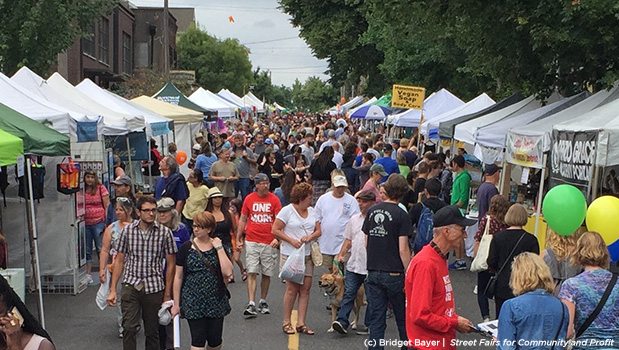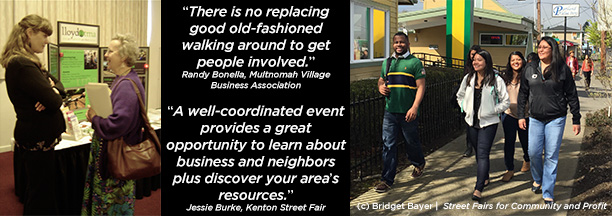Main Spotlight: Connecting, Innovating, and Sustaining a Healthy Main Street Movement
Key takeaways from six sessions at the 2025 Main Street Now Conference.

Marion, Iowa © Tasha Sams
We work in collaboration with thousands of local partners and grassroots leaders across the nation who share our commitment to advancing shared prosperity, creating resilient economies, and improving quality of life.

Emporia, Kansas © Emporia Main Street
Made up of small towns, mid-sized communities, and urban commercial districts, the thousands of organizations, individuals, volunteers, and local leaders that make up Main Street America™ represent the broad diversity that makes this country so unique.

Chicago, Illinois © Main Street America
Looking for strategies and tools to support you in your work? Delve into the Main Street Resource Center and explore a wide range of resources including our extensive Knowledge Hub, professional development opportunities, field service offerings, advocacy support, and more!

Waterloo, Iowa © Main Street Waterloo
Your one-stop-shop for all the latest stories, news, events, and opportunities – including grants and funding programs – across Main Street.

Kendall Whittier — Tulsa, Oklahoma © Kendall Whittier Main Street
Join us in our work to advance shared prosperity, create strong economies, and improve quality of life in downtowns and neighborhood commercial districts.

So you want to have a fabulous, livable neighbor-centric Main Street. You want to be able to walk between downtown businesses on safe, clean and friendly streets. You would love for your teenager to get a part-time summer job close to home. These attributes of neighborhood downtown Main Streets are possible, even in big cities, through focused effort developing your community’s assets and a willingness to have some fun!
Community assets are not always about land acquisition or infrastructure. They are also the people who are your neighbors, both business and residential. They may work at the bank but are musicians at night. They are warehouse and property owners who can offer space and financial resources. They are neighbors who are designers, photographers, organizers or have a multitude of talents.
Annual events in small towns and commercial centers entice people to come to an area. They will see and hear signs of joyful play. They will make new experiences, enjoy good tastes and feel a part of shared group activities. Street Fairs are a special kind of annual events, as old as the medieval village fair, that are reliably proven to attract people.
Street Fairs can play a significant role in creative branding and identity of a shopping district, main street, or business community—critical for small retail businesses. While they may seem like a daunting endeavor, planning a large annual event will help make a loose group become friends, strengthening relationships and forming a cohesive supportive community.
Consider the human assets of your community to find partners and volunteers for a Street Fair. It’s easy to rally volunteer organizers when motivations are known. Try simply asking them. Neighbors, both residential and business, want to improve their neighborhoods, making them safer and more valuable. Better districts in turn are more attractive to quality, diverse businesses. When successful, these businesses draw more customers, perpetuating the cycle.
Main Street businesses have to get creative when trying to bring more customers through their doors. Sales draw customers but not necessarily new ones. Advertising works, but costs are high and hard to track. Promotional events reliably bring in new faces and most importantly these days offer an experience that can’t be found when shopping online. A major Street Fair can draw thousands of people to a neighborhood offering great exposure for small businesses plus opportunities to build community among residents.

Planning and organizing a large promotion by oneself can be daunting. If you’re like most Main Street members, time is precious and money even more so. The key to planning success is combining individual efforts to leverage group forces that get stuff done! Every group has a distinctive pool of talent, naturally making each fair unique. The surest way to plan a new street fair is to start by developing partnerships with other organized community groups. Partners add stability and access to possible sponsors or donors.
Get together with a few friends or supporters of your organization and consider the human resources in your community. Make a list of people and organizations that might be helpful or supportive of your efforts. These people are known as stakeholders. List every business, church, leader, school, neighborhood and nonprofit association and classify each organization using these 3 characteristics: time, talent and treasure.
Time
New business or property owners are usually cash poor so are unlikely to be able to contribute funds for your event but generally want to gain exposure since they are new to the area. They will appreciate the recognition their business gets from being involved. Other possible helpers are long-time business owners that appreciate the neighborhood and want to give back to the community. They may volunteer to get recognition or to simply contribute.
Talent
Skilled professionals and people who provide their talents for no costs reduce expenses for the Fair. All the marketing materials, food, access to media, prizes, equipment and performances can be donated from participating volunteers. They are often entertainers, designers, and professional service providers.
Treasure
Cash is needed for much of the fair. Business people want to sponsor successful events in exchange for exposure. Sponsorship programs are a natural way to raise money for a street fair. Sponsors usually want maximum exposure for their investment so start long before your event.
Now focus on finding more help in planning your street fair. Look to the most influential person in the neighborhood. Ask for their recommendations. People feel honored to be asked, even if they are too busy to get involved themselves.
Reach out to neighboring businesses. Take a walk around your business district to learn about community members who are actively involved in other local events. A planning committee is also a great opportunity to welcome neighbors who come from different cultures. Inviting people who are from other cultures will make the fair more interesting. Seniors can be especially helpful.
Invite business owners to your planning committee so they have the opportunity to gain exposure for their business. Even when the fair is still months away, members will start getting recognition for their businesses. By helping to plan a street fair, a small business will get noticed, in the best ways!
This is the first article in a three-part series on street fairs.
Over the past two decades, Bridget Bayer has lived and breathed community development—from building and running her own small businesses, to working with more than 20 business associations in the Portland metro area—to managing and training over 1,500 volunteers. Her company, BAM, (Business Association Management) is a consulting firm that helps build community through events, raise funds and enhance the visibility of main streets and community groups.
Street Fairs for Community and Profit: How to Plan, Organize and Stage a Sensational Street Fair While Building Community, has much more information on building community through events. The nuts-and-bolts guidebook will especially help new groups in planning—and actually executing—a street fair. For experienced organizers, it will help them profit from their event. The book, 12 years in the making, is based on Bayer’s considerable experience organizing and implementing successful street fairs in Portland, OR.